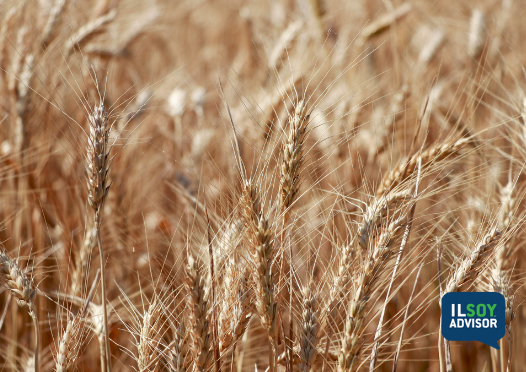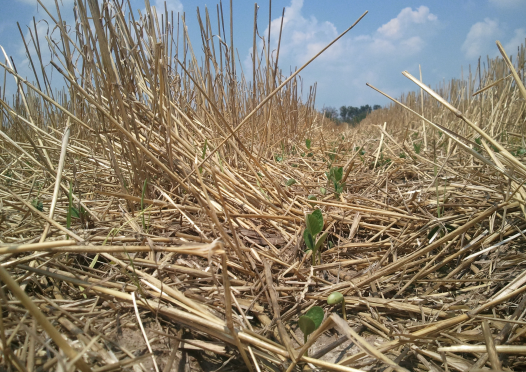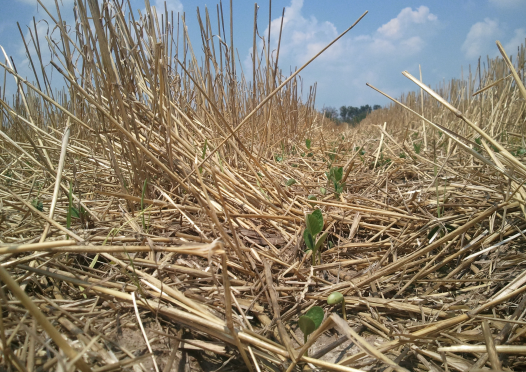ILSOYADVISOR POST
Agronomy: Double-Crop Soybeans and Frost
Double-crop soybean harvest has started across the region. Early planted double-crops have looked good all season and have good growth and pod counts. Later plantings looked good late in the season but lacked plant height, and in some fields planted in 15-inch rows have never really closed over. Row closure is a harbinger of above average double-crop soybean yield.
Yield reports from those harvesting early planted double-crops have been pretty good at 35 to 45 bu/ac. A 30 to 35 bu/ac yield has been more common in areas where July was excessively wet. And 40 to 45+ bu/ac has been more common in areas where July and August rainfall was adequate, but not excessive.
Then there were many acres of soybeans planted from mid July to August, including both double- and single-crop soybeans whose yields are still up in the air. Many acres got frosted 10 days ago and those beans were really nowhere mature enough for a frost. A hard freeze, temperatures below 28° F, when the pods are beginning to turn yellow can result in yield losses of 5 to 15%. Some of the beans planted in August were only at R6, full seed stage. A hard killing frost when beans are at R6 can result in losses that could reach 20 to 30%.
Frost damage within a soybean field may vary considerably depending on microclimate effects, landscape position in the field, canopy density and other factors. Generally, thick plant canopies formed by narrow rows and/or high plant populations hold in the soil heat better and protect the lower portion of the plants and pods to some extent. The problem is that many fields planted in this late time frame had spotty stands and failed to close over the row
The other issue is that we now have to wait for the plants to “die” or mature completely. Beans at R6 were still approximately 25 days away from maturity. Stems and pods still are green in many instances, even after the leaves have been burnt off by frost. Depending on weather conditions it may be another 7 to 10 days before some of these fields are ready for harvest
The big question has been what these ‘late’ fields will yield. And that question will not be answered until combines roll in the fields. I suspect we will see yields half of those from the beans planted in early July. And some of the latest planted fields may not get harvested at all.
Kelly is serving as the Illinois Soybean Association Double-Crop Specialist. He was raised on the family farm in Benton, Illinois and graduated from Southern Illinois University (SIU)-Carbondale with a BS in Agriculture Education and Mechanization, and a Master’s of Science (MS) in Plant and Soil Science. Kelly has spent 25 years as a soil fertility agronomist and precision agriculture consultant in southern Illinois while also spending 4 years as a Farm/Agronomy Manager and GIS Coordinator for a large farm in southeastern Illinois. He is a Certified Professional Agronomist and a Certified Crop Advisor.





Comments
Add new comment